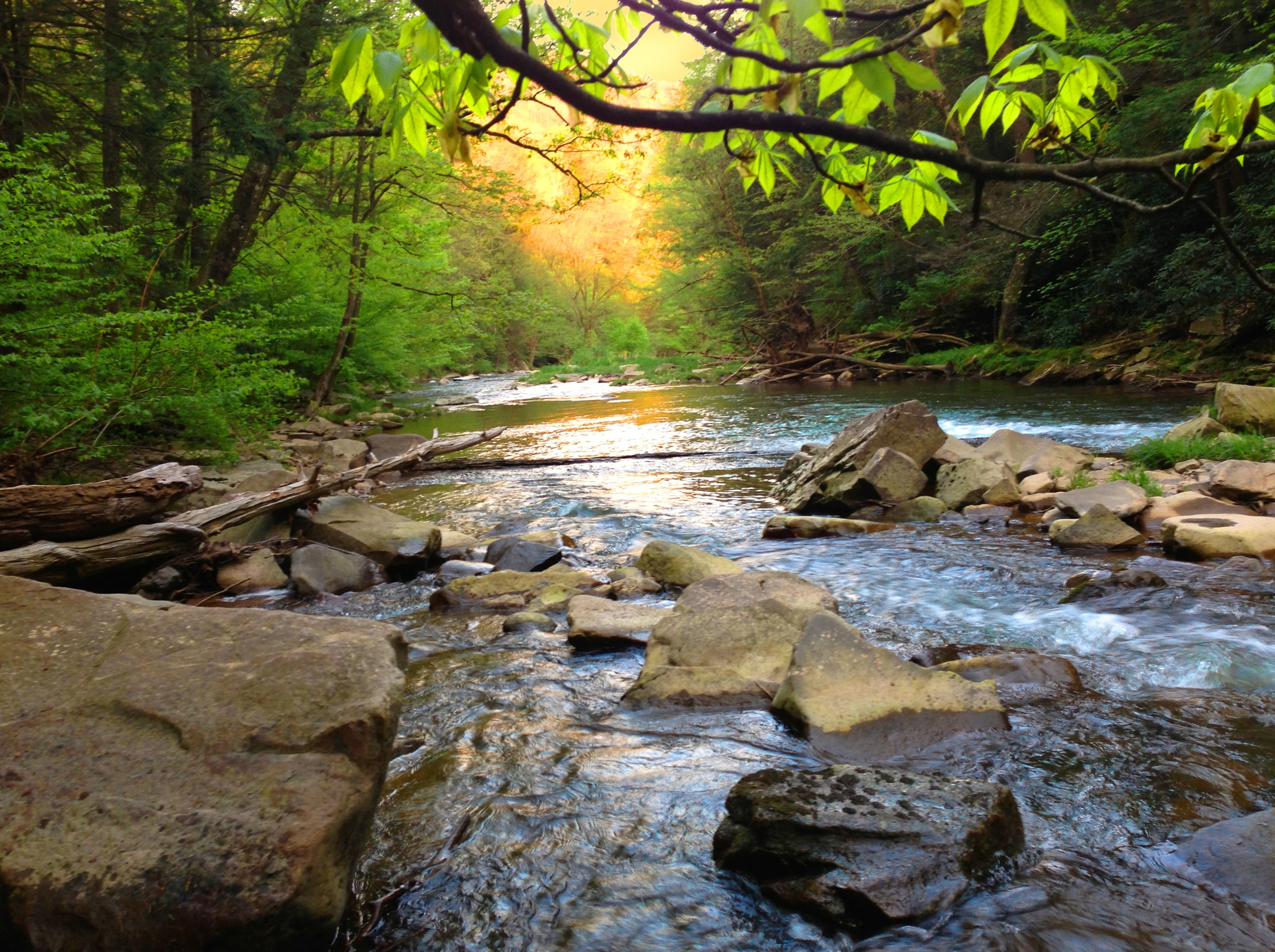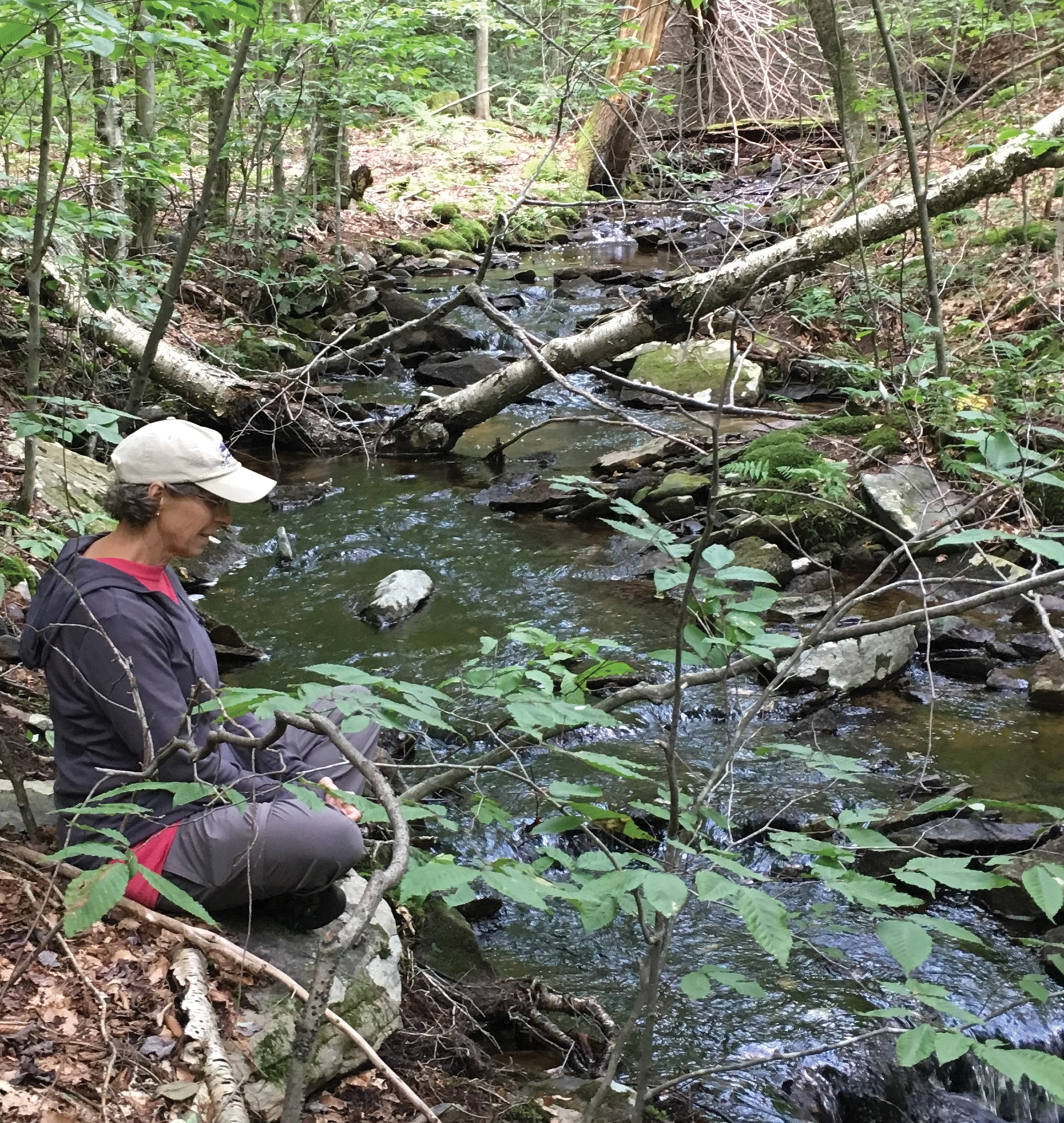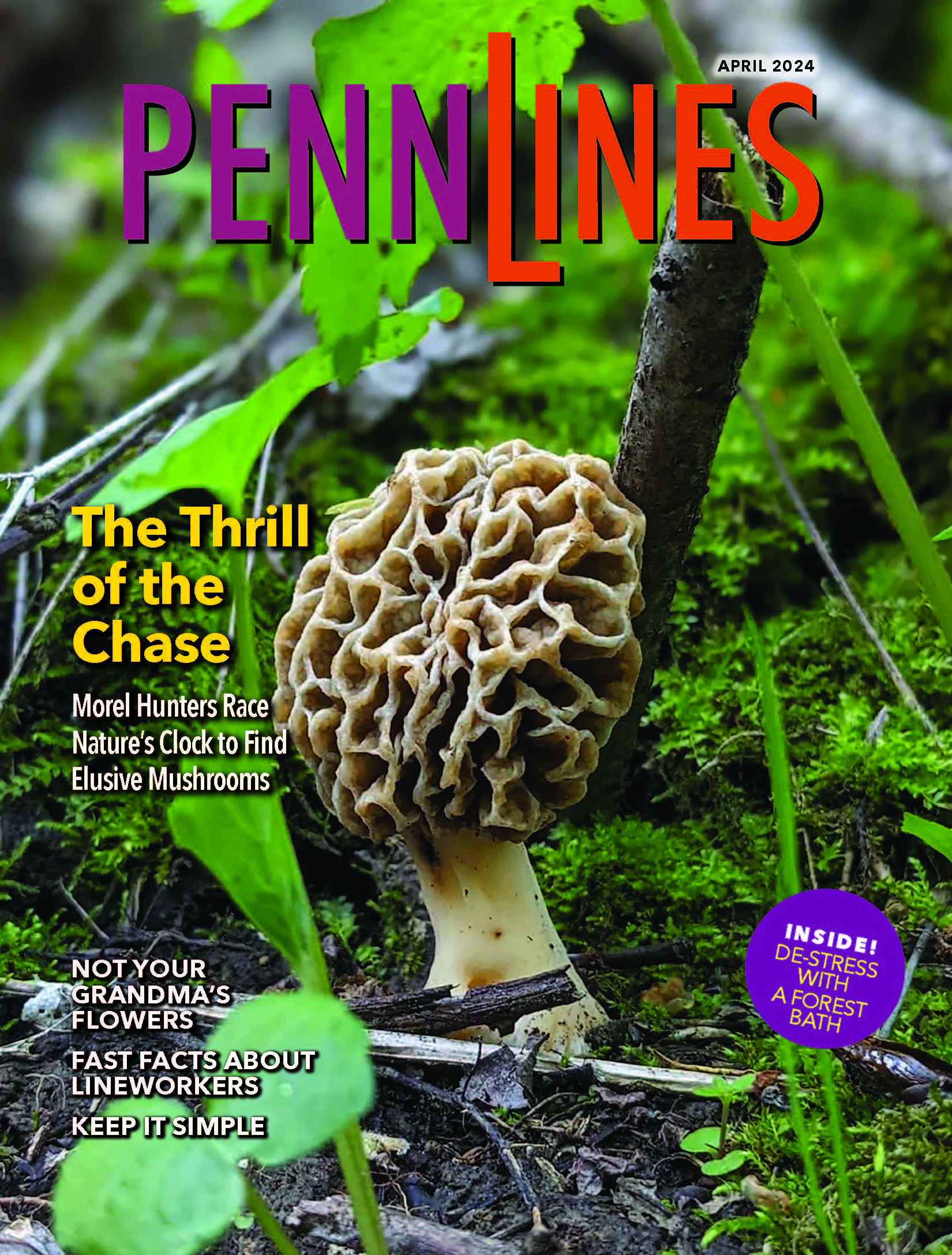Soaking Up Nature
Forest Bathing Helps Wash Away Life's Stresses
By Paula Piatt
Penn Lines Contributor
When was the last time you just “were” — no place to go, nothing to do, no schedule or agenda ahead of you?
Yeah, me too.
Now try to remember the last time you felt calm, completely relaxed, living in the moment, and not worrying about “the next thing”?
I thought so.
Maybe it’s time you carved out two hours and took a bath — in the middle of the forest.
“It’s extremely relaxing,” says Anna Marie Nachman, speaking of shinrin-yoku, the Japanese practice of “forest bathing.” Nachman, a certified guide through the Association of Nature and Forest Therapy (ANFT), offers walks and retreats in the Pennsylvania Wilds from her home and business, Nature’s Balance Forest Therapy (naturesbalanceft.com), in Clearfield County, a region deep in rural electric cooperative territory.
The idea of spending time in a forest as therapy reaches back to the Japanese tech boom of the 1980s, when workers spent countless hours indoors in front of computer screens under fluorescent lights in high-stress, high-performing jobs. (Sound familiar?) As stress-related illnesses exploded, the Japanese Ministry of Agriculture, Forestry and Fisheries — mindful of the culture’s deep understanding of and connection to nature — dedicated certain forests as therapy bases as part of a public health program.
It didn’t take long for the forest to work its magic.

‘An amazing transformation’
Studying shinrin-yoku’s effects on participants, researchers found lower blood pressure and stress hormone levels, a decrease in heart rate variability, and an overall lower heart rate. There was even evidence that phytoncides, airborne chemicals that plants — especially evergreens — give off to protect themselves from insects, helped boost participants’ immune systems.
That doesn’t surprise Nachman: “It can be an amazing transformation.”
Leading Penn State faculty, staff, and students regularly on guided walks, Nachman has seen the stress and anxiety of her clients melt away. “We had barely started the walk, and one student mentioned how she immediately felt so much calmer,” she recalls. “The change happened that fast.”
Beth Jones, also a certified ANFT guide, directs Deep Green Therapy, a Lycoming County-based nonprofit dedicated to connecting people with the healing found in nature (deepgreenjourney.com). A member of Sullivan County Rural Electric Cooperative, she leads guided walks through Worlds End State Park, Loyalsock State Forest and Rider Park in Williamsport. She acknowledges nature does the work: The forest is the therapist; the guide is just opening the door, as forest bathing practitioners say.
“Sometimes you need that guide just to help you slow it down,” she says of the time in nature. “It can be a very special experience.”
Moving at nature’s pace, both guides say, is the key to a successful experience, but this can be extremely difficult to do. According to Jones, it takes about 20 minutes of forest immersion for the brain to settle down and for the full effect of the forest to take root.
“I’ll usually start by inviting people to close their eyes and become aware of their surroundings using all their senses,” Jones explains. “What are you hearing or seeing or feeling in the breeze?”
That gives way to a slow — very slow — walk. “It’s very, very slow ... and hard for some people,” she says. “They are invited to notice what is in motion and what is happening as we move through nature.”
“I’ll help them become aware of their senses and invite them to go and spend time with a rock or a tree,” says Nachman, who follows the same slow principle of immersion. “Everyone will experience this in different ways; some may just sit and think, others will become curious about what they are spending time with.”

WASHING AWAY STRESS: In shinrin-yoku, also known as forest bathing, participants immerse themselves in nature to promote health and well-being. (Photo by Beth Jones)
Not everyone, however, wants to sit and talk to a tree.
“Some of the invitations could be a little more edgy, depending on the people, but for some groups I’ll tone things down a bit,” Jones admits.
Her ultimate goal is to get people interacting with nature in some way — sitting by a stream, noticing its flow and dipping a hand in to feel the sensation of the water, or taking an up-close look at the forest floor. The final invitation is to find a spot in the forest and just sit for 20 minutes, taking in all that it has to offer.
The walks end with sharing individual experiences with the group — if that is something the participants want to do. Jones finishes — in a nod to shinrin-yoku’s Japanese roots — with a tea ceremony, complete with a brew from things foraged along the way. It gives the bathers’ sense of taste the opportunity to participate, too.
Letting nature take its course
For all that forest bathing is and does, the guides are clear: There are certain things it isn’t.
“It’s not a hike; you’re not out for exercise, although you may get exercise,” Nachman says. “There’s no destination to reach, and there’s nothing to accomplish. Things just happen naturally. It’s not a naturalist kind of thing; we’re not going out to identify plants and animals.”
The best way to describe it, perhaps, is that it just is. And the experience will follow you for a while.
“(Participants) are able to recognize that they have elements of nature in their own backyard, and it encourages them to interact,” Jones says. “When you have this intimate experience with trees and grass and things that we usually consider very small, they become large to you, and you recognize them in the everyday places in your own life. It encourages people to spend more time in nature. They notice, ‘I feel a lot less stressed, and I have an overall sense of well-being.’ ”
A nice long (forest) bath will do that for you.
Also in this issue


